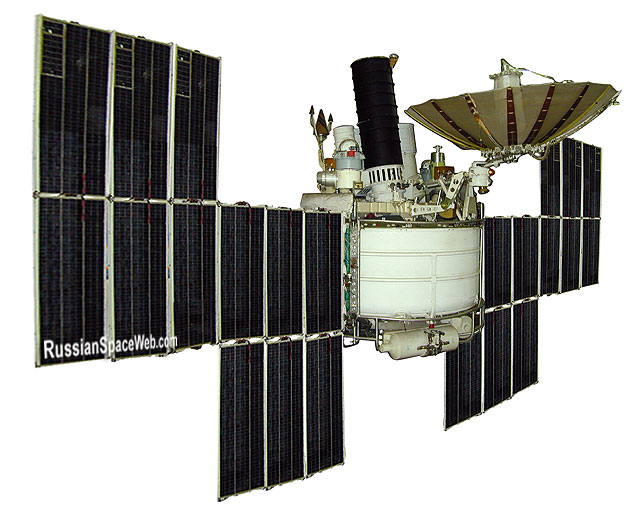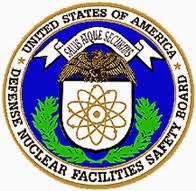
Blog
-
Geiger Readings for September 28, 2014
Ambient office = 121 nanosieverts per hourAmbient outside = 91 nanosieverts per hourSoil exposed to rain water = 83 nanosieverts per hourRed seedless grapes from Central Market = 79 nanosieverts per hourTap water = 88 nanosieverts per hourFiltered water = 82 nanosieverts per hour -
Radiation News Roundup September 27, 2014
-
Geiger Readings for September 27, 2014
Ambient office = 69 nanosieverts per hourAmbient outside = 96 nanosieverts per hourSoil exposed to rain water = 94 nanosieverts per hourCarrot from Central Market = 83 nanosieverts per hourTap water = 66 nanosieverts per hourFiltered water = 56 nanosieverts per hourPacific Cod – Caught in USA = 83 nanosieverts per hour -
Nulcear Weapons 95 – The World Came Close To Nuclear War in 1983
I have posted before about how close the world came to a nuclear war on several occasions. Sometimes it came down to the decision of one man. One human being who could decide the fate of the entire human race in a matter of moments. Fortunately for us, each time, that individual decided against nuclear suicide. These people were highly trained and had their orders from their superiors but something stopped them at the crucial moment. I like to think that it was a matter of basic humanity. When the choice came, they could not bring themselves to contribute to the death of billions and the end of human civilization.
On September 26, 1983, a lieutenant colonel in the Soviet Air Defence Forces named Stanislav Petrov was stationed at Serpukhov, a secret military bunker near Moscow in the U.S.S.R. He was charged with monitoring Oko which was the Soviet Union’s early warning system to detect a nuclear attack. If the Oko system issued an alert of a nuclear attack, Petrov was to report the alert to his superiors. Early in the morning of the 26, one of the satellites in the Oko system reported that the United States had just launched five ballistic missiles toward the U.S.S.R.
Three weeks before the Oko alert on the 26th, the Soviets had shot down a South Korean airliner that strayed into a sensitive area in U.S.S.R. Following the crash of the airliner, rhetoric heated up on both sides and the Cold War got colder. Considering this timeline and the belligerence of both nations, Petrov had to take the Oko launch alert seriously.
Petrov later reported that he had “a funny feeling in my gut” that the Oko launch alert was a false alarm. He pointed out that if the U.S. was going to launch a nuclear attack on the U.S.S.R., it would have launch many more missiles than the five reported. Additionally, the Soviet national radar system was not reporting radar corroboration of the supposed launches. And, finally, he admitted that he did not have full confidence in the Oko alert system when it came to detecting nuclear launches. Petrov reported the Oko alert to his superiors as a false alarm as was later proven to be the case.
Another such episode occurred when the U.S. was blockading Cuba during the Cuban Missile Crisis. A Soviet naval vessel crossed the line that the U.S. had announced and it was being monitored by a U.S. naval vessel. The protocol was to go to high alert if a Soviet vessel crossed the line. The Captain of the U.S. vessel should have informed Washington, D.C. of the incursion in the forbidden zone which would have moved our forces to the high alert status. That would have caused the U.S.S.R. to do the same and World War Three might have been the result. Instead, the Captain of the U.S. vessel decided that the Soviet vessel had strayed off course and simply waited to see what would happen. The Soviet vessel was off course and soon sailed back out of the forbidden zone. The U.S. Captain said that he just couldn’t bring himself to launch a chain of events that might have destroyed human civilization.
Russia inherited the Perimeter automatic retaliatory system from the Soviets. The Perimeter system has a network of sensors to detect nuclear blasts inside Russia. If the system is unable to communicate with Central Command, then it will launch the Russia nuclear arsenal at the United States. I would much prefer to have a human being with common sense and empathy for other people deciding whether to launch a nuclear war.
Oko Satellite:
-
Radiation News Roundup September 26, 2014
Nuclear Expert says that ‘mystery’ Fukushima plutonium was found. enenews.com
The Finnish government has decided not to grant Teollisuuden Voima Oyj (TVO) an extension to its 2010 decision in principle for the construction of a fourth unit at the Olkiluoto nuclear power plant. world-nuclear-news.org
-
Geiger Readings for September 26, 2014
Ambient office = 80 nanosieverts per hourAmbient outside = 105 nanosieverts per hourSoil exposed to rain water = 88 nanosieverts per hourYellow bell pepper from Top Foods = 83 nanosieverts per hourTap water = 114 nanosieverts per hourFiltered water = 101 nanosieverts per hour -
Radioactive Waste 99 – Update on the Recent Accident at the Waste Isolation Pilot Plant 11
It has now been seven months since there was a release of radioactive particles from the Waste Isolation Pilot Plant (WIPP) near Carlsbad, New Mexico. A drum containing waste generated by nuclear weapons production at Los Alamos National Laboratory (LANL) burst in the underground facility. The air filtration system was not functioning correctly and the released radioactive materials including plutonium and americium escaped from the WIPP and were detected in Carlsbad over twenty miles away.
The exact contents of the drum that exploded are not well documented. The scientists at LANL have conducted over three thousand experiments with chemicals that might have been in the drum but have failed to duplicate the event that ruptured the drum. A recent report from Reuters claimed that a source at WIPP told them that a second drum may have ruptured and released radioactive materials at WIPP. Just a few days ago, the Department of Energy denied that there was any evidence of a second drum exploding at the WIPP. Apparently LANL announced that there was a second drum of their waste at the WIPP that contained much the same type of wastes and additives in the drum that did explode.
Six hundred and seventy eight other drums containing waste from LANL are now considered to be at high risk for heating and bursting. Of these drums, six hundred are stored at the WIPP, fifty seven drums are still at LANL and one hundred and thirteen drums are at a temporary storage in Texas.
LANL has been producing about ten plutonium pit triggers for nuclear warheads per year for the past few decades. With the call to renovate the U.S. nuclear arsenal, LANL will have to increase its pit trigger production to eighty a year. This will cause a huge increase in nuclear waste from LANL. With WIPP closed and no good estimation of when it may reopen, the question of what to do with all this new waste cannot be answered at this time. The pit triggers will be produced in the Plutonium Facility 4 (PF4) at LANL which is thirty six years old and located over an active seismic fault. Problems with the PF4 caused LANL to close it over a year ago.
The U.S. Defence Nuclear Facilities Safety Board (DNFSB) issued a report on a three year review of emergency preparedness at U.S. nuclear weapons facilities. In the report, the DNFSB stated that the problems that it found with the response to the accident at WIPP are also relevant to other U.S. nuclear weapon facilities. The report concluded that the underlying causes of the problems included “ineffective implementation of existing requirements, inadequate revision of requirements to address lessons learned and needed improvements to site programs, and weaknesses in DOE verification and validation of readiness of its sites with defence nuclear facilities….” In light of these findings, the DNFSB report found that the “DOE has not comprehensively and consistently demonstrated its ability to adequately protect workers and the public in the event of an emergency.” Given that the U.S. is embarking on a major upgrade to its nuclear arsenal, the conclusion of the DNFSB report is cause for great concern and needs to be addressed by the U.S. Department of Defence.
-
Radiation News Roundup September 25, 2014
The Japanese NHK television channel changed their scheduled TV program about Fukushima radioactive particles to a show about dinosaurs with no explanation. fukushima-diary.com
The Navy has shut down almost all nuclear propulsion-related work at the Norfolk Naval Shipyard after two incidents involving potentially contaminated material. nuclearstreet.com
-
Geiger Readings for September 25, 2014
Ambient office = 84 nanosieverts per hourAmbient outside = 90 nanosieverts per hourSoil exposed to rain water = 100 nanosieverts per hourOrange bell pepper from Top Foods = 111 nanosieverts per hourTap water = 111 nanosieverts per hourFiltered water = 99 nanosieverts per hour -
Nulcear Weapons 94 – U.S. – Russia – China – Pakistan Are All Upgrading Their Nuclear Arsenals
My last post discussed the work being done in North Korea on the development of tactical nuclear weapons. While North Korea is a wild card in the international nuclear weapons arena, there are other more important players who are working on their arsenals.
President Obama has been a strong advocate for global nuclear disarmament since before he was elected. In 2009, he signed an agreement with the then president of Russia to cut strategic nuclear arms. Unfortunately, when the current Russian president seized the Crimea in Ukraine this year, the momentum toward nuclear disarmament slowed. The Russian President recently mentioned nuclear weapons in discussing possible conflict in Eastern Europe. In the past month, Russian fighters and Russian nuclear bombers entered the identification zone off the West Coast of the U.S. and Canadian.
Last month, the Kansas City National Security Campus was dedicated in Kansas by the U.S. government to assist in the revitalization the aging nuclear warheads in the U.S. arsenal. The plant is part of a nationwide program which includes creating a new generation of nuclear weapon delivery systems. The projected cost of these new programs is three trillion dollars over the next three decades. With new Russian and Chinese belligerence, it would be politically impossible for Obama to pursue significant cuts in U.S. nuclear weapons.
Russia had announced recently intentions to renew its strategic nuclear forces by seventy percent by 2020. Now Russia has just announced that the renewal will be one hundred percent by 2020. The Defense Minister of Russia also said that thirty percent of the army and navy weapons would be switch to “cutting edge” technologies in 2015. He hinted that there were some secret weapons projects going on as well.
Last month, China admitted the existence of the rumored Dongfeng-41A, a “next generation” intercontinental ballistic missile which can carry ten nuclear warheads and travel up to twelve thousand miles. International treaties have forged that banned the creation of such multiple-warhead missiles between Russia and the U.S. Unfortunately, Russia backed out of the treaty.
Pakistan recently announced that it would be creating a fleet of submarines to carry sea launched nuclear tipped missiles. This expansion of capability is obviously aimed at India which has a new right-wing government that has been ratcheting up belligerent rhetoric toward Pakistan since it was elected. The idea behind the new submarine fleet is to warn potential attackers (India) that even if Pakistan was decimated with an unexpected nuclear attack, the submarines would be able to launch a devastating retaliatory nuclear strike against the attacker. Unfortunately, if either Pakistan or India launched a nuclear strike on the other, within months, the prevailing winds would carry the nuclear fallout back over the attacker. It would be suicidal.
With Russia, the U.S. and China announcing major nuclear upgrades, it appears that we are entering a new nuclear arms race that might return us to the instability of the Cold War period. As dangerous as the possibility of intentional nuclear war may be, the possibility of an accidental nuclear war breaking out is even more worrisome.
Architect’s model of the new National Security Campus in Kansas City:






